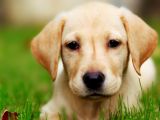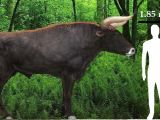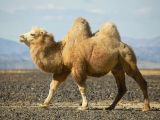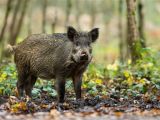1. At a similar body weight, the brain of the domestic cat is 23.9% lighter than that of the wild cat, that of the dog 29 % lighter than that of the wolf, and that of the pig 34 % lighter than that of the wild boar. Apparently, these species have really let themselves go since they started hanging around us humans.
Then again, they have us to look after them, so why bother?
2. The gut of the wild cat rarely reaches 1.5 meters (5 feet) in length, while that of the domestic cat is usually 2 meters (6.6 feet) long, an adaptation to a diet that does not include all that much meat.
You see, meat packs a lot of calories and all the right nutrients felines need to grow strong and healthy. The stuff we usually feed out cats doesn't. To make the most of whatever nutrients they do get in their food, they've evolved to have a longer digestive tract.
A longer digestive tract means prolonged contact with the food traveling through it, which in turn means a better absorption of nutrients. Smart move, kitties!
3. Compared to dogs, wolves have a smaller orbital angle, i.e. the angle between the upper and lower edges of the eye socket and a line drawn across the top of the skull. Specifically, the orbital angle has a value of 40 to 45 degrees in wolves and 53 to 60 degrees in dogs.
In case you were wondering, all this talk about orbital angles is a fancy way of saying wolves have wider, flatter skulls than dogs, their cheekbones oriented outward and upward.
One other difference between these two species is that wolves have precaudal glands at the base of the tail while dogs have sweat glands on their paw pads.
4. Cattle are much smaller than their wild ancestors: the shoulder height of a domestic cow is around 1.5 meters (5 feet), whereas aurochs, extinct bovine that populated Europe, Asia and North America, and that are thought to be the ancestors of domestic cattle, were up to 1.75 meters (5.75 feet) tall.
Unlike cattle, aurochs had lyre-shaped horns set at a forward angle, a pale stripe on the spine, and sexual dimorphism concerning the coat color, with bulls being darker colored than the cows.
5. When compared to domesticated pigs, wild boars tend to have longer legs and a longer and narrower head. They need a longer snout to go digging in the ground for food and having long limbs can only prove an advantage when trying to run away from predators.
6. Wild Bactrian camels living in the Gobi desert covering parts of China and Mongolia can drink saltwater, while a domestic camel would die doing this. Wild camels also have longer feet than the domestic camels, again because life is not easy for animals who have no humans to keep them safe.
7. Wild sheep do not have wool. In wild sheep both rams and ewes have horns, with the rams’ being much larger. The horns of a mature bighorn ram can weigh 14 kilograms (30 pounds), as much as the rest of its bones put together.
The wild sheep is also much larger than the domestic sheep. Rams can stand an impressive 1.2 meters (3.9 feet) tall and weigh as much as 140 kilograms (nearly 310 pounds).
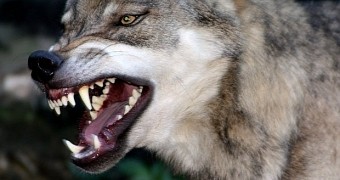
 14 DAY TRIAL //
14 DAY TRIAL // 
